This will be my final word on the subject.
Which is better? Neither. Which is worse? Neither.
But before we get into pros and cons, let’s go over each of these systems. For the sake of this article, we are not discussing compressed gas systems (CO2 and green gas).
In order to propel a BB downrange, we use a puff of air, not unlike back in school when we’d steal a straw from the cafeteria and launch spitballs at classmates. Two of the ways to achieve this is the electro-mechanical system of the AEG, or the compressed air in an HPA.
Automatic Electric Gun (AEG)
In the early 90’s, a Japanese company called Tokyo Marui (TM) created the first AEGs. Before this, all airsoft guns were either spring or green gas powered. TM had years of experience with RC vehicles, and was able to create a system of gears with a motor to drive a spring loaded piston to create the puff of air.
As airsoft expanded through southeast Asia, and eventually into the UK and the rest of the world, AEGs became better and were capable of longer ranges and more accuracy. More AEG companies emerged, offering a wider range of replicas to meet the demands of the players.
Over the past few decades, AEGs haven’t really changed a lot, which is why some manufacturers will still boast their internals are “TM spec”, meaning the parts are “standard”. Since TM has been in the business the longest, and basically invented modern airsoft, they have a huge following, and for the brand recognition, you’ll pay twice to three times as much for any of their replicas.
At first, the internals of an AEG can be overwhelming to anyone, but it really breaks down into three distinct sections:
-
-
- Trigger
- Drivetrain
- Air Volume
-
Trigger
We’ll start with the trigger. These days, the trigger can be an older style analog trigger trolley, a microswitch, an Electronic Trigger Unit (ETU), or a fancy Metal–Oxide–Semiconductor Field-Effect Transistor (MOSFET). It doesn’t matter what you call it, or how it’s made – each of these trigger systems are the same thing: a way to complete the circuit to send electricity to the motor.
Drivetrain
The drivetrain inside a gearbox has one job: to compress the internal spring that punches the piston forward. It does this with three gears being rotated by the motor: the Bevel, Spur, and Sector gears.
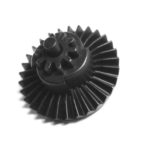 The bevel gear interacts directly with the pinion gear of the motor and it modifies the direction of shaft rotation. Bevel gears are cone shaped, which transmit motion between two intersecting shafts, and in the case of an AEG, the shafts are at a right angle to each other.
The bevel gear interacts directly with the pinion gear of the motor and it modifies the direction of shaft rotation. Bevel gears are cone shaped, which transmit motion between two intersecting shafts, and in the case of an AEG, the shafts are at a right angle to each other.
Bevel gears are found everywhere in the world, not just in airsoft. You’ll find bevel gears in a number of everyday items, devices, and machines, including automobiles, printing presses, power plants, and much, much more.
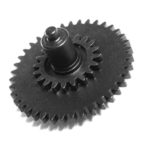 A spur gear is the simplest type of gear. It’s a gear with teeth. No angles, nothing fancy, just a gear with teeth. In an AEG, the spur gear is also where the gear ratio starts to get changed. As an example, in an 18.72:1 gearset, the spur gear has 39 teeth. In a 12.64:1 gearset, the spur gear has 36 teeth. Since gear ratios are calculated with multiplication, that 3 fewer teeth makes a big difference.
A spur gear is the simplest type of gear. It’s a gear with teeth. No angles, nothing fancy, just a gear with teeth. In an AEG, the spur gear is also where the gear ratio starts to get changed. As an example, in an 18.72:1 gearset, the spur gear has 39 teeth. In a 12.64:1 gearset, the spur gear has 36 teeth. Since gear ratios are calculated with multiplication, that 3 fewer teeth makes a big difference.
The spur gear is actually two spur gears: the larger diameter gear is driven by the bevel gear, while the smaller diameter gear drives the sector gear.
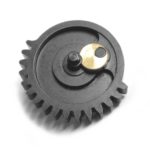 The final gear in the drivetrain is the sector gear. This is a bit of a misnomer because in an AEG, the sector gear is actually a spur gear with a sector gear on it. The spur gear of the sector gear is driven by the previously-mentioned spur gear, and the sector gear is what engages with the piston. Clear as mud, yes? Regardless, sector gears are used in applications when less than 360° of rotation is required. The number of teeth on the sector gear can vary, depending again on the desired gear ratio.
The final gear in the drivetrain is the sector gear. This is a bit of a misnomer because in an AEG, the sector gear is actually a spur gear with a sector gear on it. The spur gear of the sector gear is driven by the previously-mentioned spur gear, and the sector gear is what engages with the piston. Clear as mud, yes? Regardless, sector gears are used in applications when less than 360° of rotation is required. The number of teeth on the sector gear can vary, depending again on the desired gear ratio.
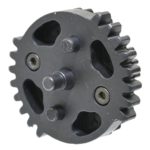 You’ve undoubtedly heard of a “DSG”, or “Dual Sector Gear”, which is an attempt to get more RPS out of an AEG by decreasing the number of teeth that interacts with the piston rack, and adding a second set of teeth on the opposite side. Instead of one rotation resulting in one shot, one rotation results in two shots.
You’ve undoubtedly heard of a “DSG”, or “Dual Sector Gear”, which is an attempt to get more RPS out of an AEG by decreasing the number of teeth that interacts with the piston rack, and adding a second set of teeth on the opposite side. Instead of one rotation resulting in one shot, one rotation results in two shots.
Adding a DSG to your AEG does require some tinkering and fine-tuning; namely, a higher torque motor and a stronger spring, because the piston will be drawn back about half as far, resulting in less air volume to spit out the BB.
We’ve posted a gear ratio calculator on the Calcs page for your convenience.
Air Volume
 Without getting too technical here, the air volume is created in the cylinder when the drivetrain pulls back the piston, compressing the spring. Once the last tooth on the sector gear passes past the last rack tooth on the piston, the spring propels the piston forward, which forces the air through the nozzle and sends the BB downrange.
Without getting too technical here, the air volume is created in the cylinder when the drivetrain pulls back the piston, compressing the spring. Once the last tooth on the sector gear passes past the last rack tooth on the piston, the spring propels the piston forward, which forces the air through the nozzle and sends the BB downrange.
Again, this creates a very complicated-looking gaggle of parts inside a gearbox, but it’s overall a decent design. But when you see the parts all working in concert with each other, it makes a little more sense. All AEG gearboxes work in a similar manner, they just have different shapes.
Yes, I left out a lot of things, like the Anti-Reversal Latch (ARL), cut-off lever, selector plate, tappet plate, mechanical safety, shimming, etc.
High Pressure Air (HPA)
You were today years old when you found out that firefighters breathe air, not pure oxygen from their SCBA. That’s exactly the same thing that HPA uses… just in a smaller tank.
HPA uses compressed air in an external canister, or tank, to power the airsoft gun. There are infinitely fewer moving parts in this system, but more external parts, to include a tank, regulator, air supply line, and internally, a trigger and HPA engine. The best part about HPA for fans of the platform is the fact that pretty much everything discussed in the AEG section is removed from the gearbox.
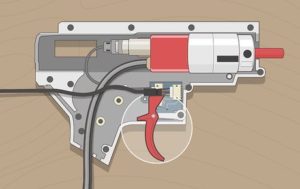 The meat and taters of an HPA system is the HPA engine, which allows your airsoft gun to work pretty much exactly like a nail gun. It sends a pre-measured quantity of air into the hop chamber, and that propels the BB downrange. It is an elegant and simple system.
The meat and taters of an HPA system is the HPA engine, which allows your airsoft gun to work pretty much exactly like a nail gun. It sends a pre-measured quantity of air into the hop chamber, and that propels the BB downrange. It is an elegant and simple system.
There are two types of HPA engines on the market, the first being mechanical-pneumatic, which are semi-auto only, but don’t require an external battery, and the electric-pneumatic which are capable of some crazy stuff, but a battery is required.
Different engines have different features, but that’s beyond the purview of this article.
Pros and Cons of Each
Newer players are always terrified of HPA guns. We’ve all seen the magdump videos on the Tube, and yes, it’s true HPA is capable of producing inhuman joules and RPS, we have to keep in mind that 1.86j (SAASMaine and Harris Airsoft limits) is 1.86j, it doesn’t matter where that puff of air comes from. I can get almost 50 RPS out of my Polarstar Jack, but while that’s fun for plinking and good for bragging rights, that’s twice the RPS limit at SAASMaine (and other places as well), and it would simply not be allowed on the field.
Nearly every “pro” for HPA is a “con” for AEG, and vice versa. For example, it takes zero technical ability to change the joules and RPS of an HPA system… turn up the pressure, and bluetooth into the FCU (or push a button), respectively. For an AEG, that means installing a stronger spring, and changing out the motor and/or gears, respectively.
HPA requires a reservoir of compressed air, which is most commonly an aluminum or carbon fiber tank carried in a pouch, and an airline that runs from the tank and regulator to the airsoft gun. That can be a lot of added weight.
HPA is a whole lot quieter than AEGs because there aren’t nearly the same number of moving parts. Usually all you get is the “mouse fart” coming out of the muzzle, and that tiny little sound can be farther quelled with the use of a suppressor of some sort.
HPA is also, in theory, easier to maintain, again, due to the lack of moving parts. If you’re running a mechanical pneumatic engine, you don’t even have to worry about a battery or any electronics.
The first and most obvious downside to HPA is the initial outlay of money. The ONLY place you should buy anything HPA-related is Amped Airsoft out of Pittsburgh, PA. Their customer serve is seriously second to none, and they will always work with a customer.. especially one that’s just breaking into HPA.
So having said that, Amped’s PolarStar Jack V2 Player Package will run you at least $450, and that is the price above what you’ve already paid for the airsoft gun. They do sell “drop in” gearboxes that they’ve already assembled for you, and those are closer to $500, or even buy a “pre-upgraded” HPA airsoft gun, which can run from $600 to north of $900, and that’s not even including the tank.
So yeah, if you want HPA, you’ll have to deal with a massive cash layout, lugging around an air tank, and being tethered to that tank with an air line. You also have to find out if you can get your tank filled locally, or you need to buy a high pressure hand pump (it’s like a bike pump on steroids) or buy a Yong Heng type high pressure compressor for another $300+. Most of the HPA players I know have invested in a large SCUBA tank and fill their small bottles off that, then only have to get the SCUBA tank refilled.
HPA is not without other hazards either. Developing a leaky seal in the field will render your day done unless you have a backup AEG or a spare tank/regulator/air line (whatever part failed) – or if you’re trigger-happy and you run out of air during a game and don’t have a backup tank.
Are the pros worth it? That’s up to you. That’s up to each individual player. I ran HPA a bit for a few years, but honestly, the cons outweighed the pros, especially convincing this old back to spend half an hour pumping the tank full.
AEGs, on the other hand, take a fair bit of electro-mechnical skill to make operate at peak efficiency, and unless you can do that level of tech work yourself, it can cost a pretty penny… but still not quite as much as a full HPA setup, especially if the tech you hire is smart about it and not just blindly throwing the most expensive parts into the build.
If you run out of battery during a game, your second battery is a fraction of the cost and weight as a second filled air tank. AEG players never have to worry about getting their air line snagged on something. Did I mention there’s a lot less weight? Old knees like mine appreciate less weight.
To me, as a tech and a player, I get so much satisfaction when I’m chronoing or setting my hopup and having someone say “that sounds fucking NICE”, or “holy shit, that’s a snappy build” (both are direct quotes from mods at Harris)… getting that gearbox shimmed perfectly.. that makes my tech boner happy.
But as a player, I can feel every shot, regardless if it has a “recoil” system in it or not. Feeling the gears spring to life, the piston head slamming against the cylinder head. The gun feels alive. This is why AEG fans will say that “HPA has no soul” – you squeeze the trigger and there’s a mousefart. That’s it.
Wrap Up
Full transparency: I personally do not like HPA – not as a player, and not as a field owner (it’s way too easy to cheat with HPA.. the player just has to have the same color zip ties as the field). However, I did try to present the information in a neutral manner.
As with absolutely everything else in airsoft, run what YOU want to run. If you have the extra $500 or $600, go for it! HPA is a lot of fun, but despite what the HPA crowd says online, it’s not god-mode “solve all your problems”. If you have a crap bucking and dirty barrel, it doesn’t matter which system you’re running… your range and accuracy will still be shit. Any time I ask a tech question online (something I’ve actually stopped doing because I can’t stand the I’M USING ALL CAPS SO I’M MORE RIGHT” responses) and someone says “just HPA it”, that’s when I bring out the “HPA has no soul” thing. They start on with the pros of HPA, and I used to respond with the cons of HPA, which they dismissed as “doesn’t happen a lot” or “it’s not that much more weight” or whatever, so now I just don’t bother.
 But yeah. If you have the coin, and the desire, and the knees, absolutely HPA your gun. Hell, I’ll even install it for you. Well, I’ll obviously charge you, but I won’t get in your face about the “no soul” thing, unless you don’t get everything from Amped. 😛
But yeah. If you have the coin, and the desire, and the knees, absolutely HPA your gun. Hell, I’ll even install it for you. Well, I’ll obviously charge you, but I won’t get in your face about the “no soul” thing, unless you don’t get everything from Amped. 😛
As always, if there are things I should add, or things I got wrong, please let me know. Cite your sources though. 🙂
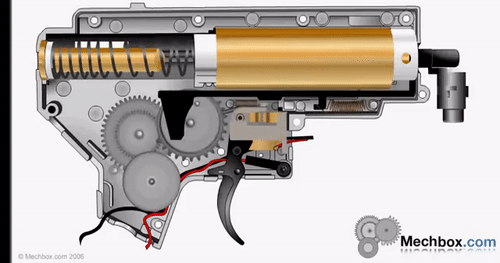
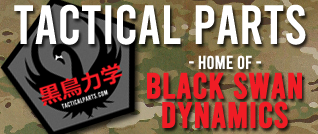




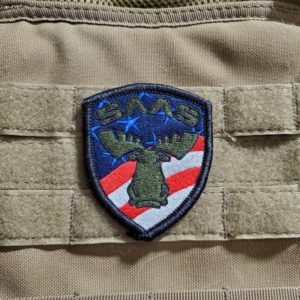

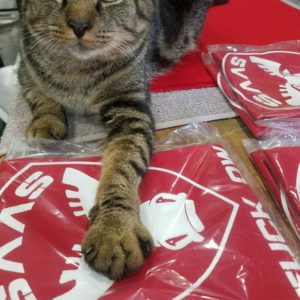




One comment on “AEG vs. HPA”
[…] Check our blog on AEG vs. HPA here. […]